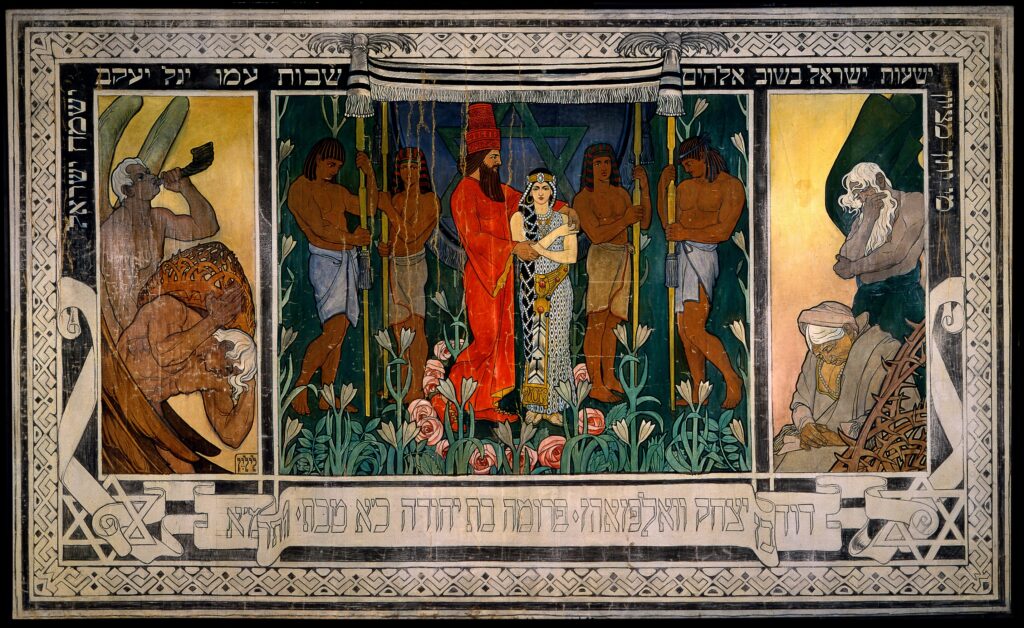We’re closing this cycle of Cantata Trail sessions with what’s possibly Bach’s best-known cantata, “Wachet auf, ruft uns die Stimme”. It’s interesting that given the methodical approach that we’ve been taking to exploring JSB’s cantata production, we can look at BWV 140 and place it in context according to several of its characteristics, regardless of its “celebrity status” within the body of Bach’s vocal music.
“Wachet auf” was composed for the 27th Sunday after Trinity. This is a Sunday that occurs very rarely, only when Easter is particularly early in the year. This happened only twice during Bach’s tenure in Leipzig: first in 1731, when this cantata was premiered, and later in 1742, when he may have used it again, although we don’t know for sure.
The unknown librettist borrowed heavily from a hymn by Philipp Nicolai from 1599: Movements 1, 4 and 7 of the cantata are verses 1, 2 and 3 respectively of the hymn. Movements 2, 3, 5 and 6 are original poetry, with allusions to the Sunday gospel (Matthew 25: 1-13, the Parable of the Ten Bridesmaids) and other biblical references.
As was the case with librettos based heavily on chorales, Bach took the tune associated with the original hymn and used it in the music of the corresponding movements, creating what we call a “chorale cantata”.
The overarching theme of the libretto is that of a wedding – on an earthly plane, between a bride and her groom, but on the spiritual plane, between the soul and Jesus. This theme brings about the other salient characteristic of the piece: both arias are duets for soprano and bass. In them, the soprano represents the soul and the bass, Jesus, engaging with each other via a type of love/erotic poetry also found in a few other cantatas. This allows us to also classify BWV 140 as a “dialog cantata”.
The orchestration calls for french horn, 2 oboes and taille (tenor oboe), strings including a violino piccolo, 4-part choir, 3 solo voices (soprano, tenor, bass), and continuo. The solo voices have clear roles – the soprano represents the Soul, the bass Jesus, and the tenor is the narrator.
The opening chorus is a masterful example of a chorale fantasia. The chorale tune is a complex one, with 12 phrases in total, of varying lengths. Bach gives it to the sopranos and has the French horn double them. Around the tune, he builds an incredible structure utilizing 3 groups – the reeds (oboe 1, 2 and taille), the strings (violino piccolo, violin 1 & 2, viola) and the other 3 voices of the choir. The instrumental groups dialog with each other using motifs derived from the tune in different ways, while the voices echo the tune more directly and imitatively. The “Alleluja” serves as a “B” fugal section of sorts, with a syncopated theme, before the initial ritornello comes back to close the movement.
After this intense chorus, the tenor delivers a direct and unassuming secco recitative, in which he advances the narrative, announcing that the groom is approaching. This is followed by the first love duet, accompanied by the violino piccolo and basso continuo. Being pre-wedding, this duet is almost tentative and exploratory in nature – the voices sing alternatively, like getting to know each other, and the lightness of the violino piccolo, with its quick and agile runs, is almost flirtatious. Alfred Dürr puts this movement “among the most beautiful love duets in the musical literature of the world!”
With this we arrive at the midpoint of the cantata, movement 4, also based on the Nicolai chorale. In this text, Zion (or Jerusalem) is rejoicing on the arrival of the groom, Jesus. The poem also lets us know that the wedding is about to happen, symbolized by the “evening meal in the hall of joy”. This stanza is set as the plain chorale melody only slightly ornamented, and Bach gave it to the tenor, as the narrator, accompanied by the violins and violas in unison and basso continuo. Some performers choose to have a solo voice on the singing line, while others give it to all tenors in the choir. This movement was later arranged by Bach as one of the Schübler Chorales for organ, BWV 645.
Movement 5 is a recitative for the bass, in which the groom takes the Soul as his bride. As it’s always the case when Jesus speaks, the recitative is accompanied by strings and continuo. This leads to the second love duet. The flirtatious, tentative mood of the first duet is gone, and instead the voices join in cheerful imitative motifs and parallel runs, accompanied by an oboe who decorates using the same material, contributing to the feeling of unity.
The cantata closes with a 4-part harmonization of the choral tune, in which the instruments double the voices. The French horn and the violino piccolo at the octave lend a special shine to the tune, with its particular metric determined by the phrase lengths.
